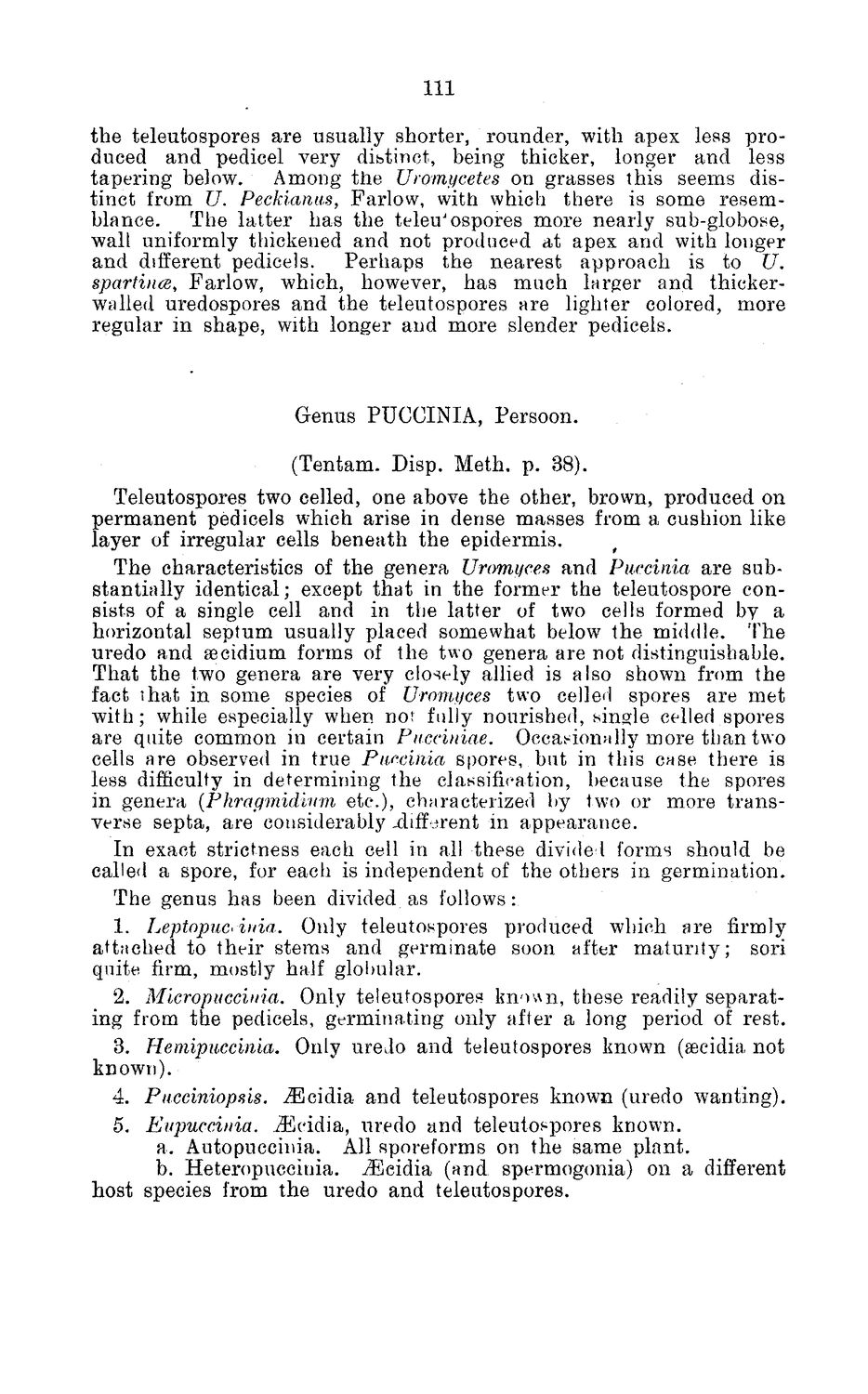| |
| |
Caption: Board of Trustees Minutes - 1884
This is a reduced-resolution page image for fast online browsing.

EXTRACTED TEXT FROM PAGE:
Ill the teleutospores are usually shorter, rounder, with apex less produced and pedicel very distinct, being thicker, longer and less tapering below. Among the Uromycetes on grasses this seems distinct from U. Peckiamis, Farlow, with which there is some resemblance. The latter has the teleu'ospores more nearly sub-globose, wall uniformly thickened and not produced at apex and with longer and different pedicels. Perhaps the nearest approach is to U. spartince, Farlow, which, however, has much larger and thickerwalled uredospores and the teleutospores are lighter colored, more regular in shape, with longer and more slender pedicels. Genus PUCCINIA, Persoon. (Tentam. Disp. Meth. p. 38). Teleutospores two celled, one above the other, brown, produced on permanent pedicels which arise in dense masses from a cushion like layer of irregular cells beneath the epidermis. The characteristics of the genera Uromyces and Puccinia are substantially identical; except that in the former the teleutospore consists of a single cell and in the latter of two cells formed by a horizontal septum usually placed somewhat below the middle. The uredo and aecidium forms of the two genera are not distinguishable. That the two genera are very closely allied is also shown from the fact that in some species of Uromyces two celled spores are met with; while especially when not fully nourished, single celled spores are quite common in certain Pucciniae. Occasionally more than two cells are observed in true Pmciaia spores, but in this case there is less difficulty in determining the classification, because the spores in genera (Phragmidinm etc.), characterized by two or more transverse septa, are considerably .different in appearance. In exact strictness each cell in all these divided forms should be called a spore, for each is independent of the others in germination. The genus has been divided as follows: 1. LeptopuC'inia. Only teleutospores produced which are firmly attached to their stems and germinate soon after maturity; sori quite firm, mostly half globular. 2. Mlcropucciuia. Only teleutospores knoun, these readily separating from the pedicels, germinating only after a long period of rest. 3. Hemipuccinla. Only ureJo and teleutospores known (secidia not known). 4. Pucciniopsis. iEcidia and teleutospores known (uredo wanting). 5. Eupuccinia. iEcidia, uredo and teleutospores known. a. Autopuccinia. All sporeforms on the same plant. b. Heteropuccinia. iEcidia (and spermogonia) on a different host species from the uredo and teleutospores.
| |